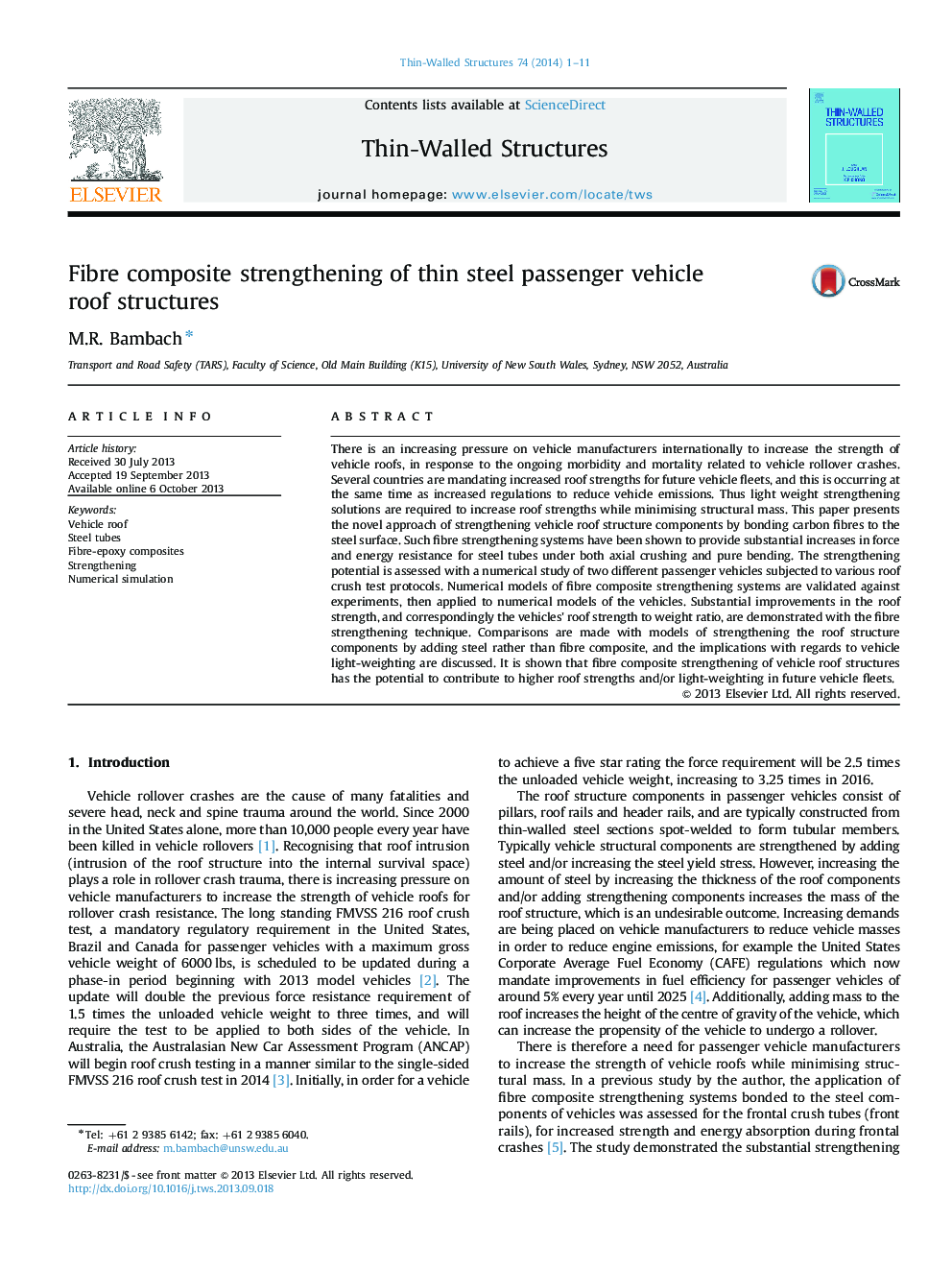| Article ID | Journal | Published Year | Pages | File Type |
|---|---|---|---|---|
| 309013 | Thin-Walled Structures | 2014 | 11 Pages |
•Numerical models of fibre strengthened steel tubes are validated against experiments.•The roof structure components of two vehicle models are strengthened with carbon fibre.•The vehicles are subjected to various roof crush test protocols.•Fibre strengthening roof components increase the roof strength nearly two times.
There is an increasing pressure on vehicle manufacturers internationally to increase the strength of vehicle roofs, in response to the ongoing morbidity and mortality related to vehicle rollover crashes. Several countries are mandating increased roof strengths for future vehicle fleets, and this is occurring at the same time as increased regulations to reduce vehicle emissions. Thus light weight strengthening solutions are required to increase roof strengths while minimising structural mass. This paper presents the novel approach of strengthening vehicle roof structure components by bonding carbon fibres to the steel surface. Such fibre strengthening systems have been shown to provide substantial increases in force and energy resistance for steel tubes under both axial crushing and pure bending. The strengthening potential is assessed with a numerical study of two different passenger vehicles subjected to various roof crush test protocols. Numerical models of fibre composite strengthening systems are validated against experiments, then applied to numerical models of the vehicles. Substantial improvements in the roof strength, and correspondingly the vehicles' roof strength to weight ratio, are demonstrated with the fibre strengthening technique. Comparisons are made with models of strengthening the roof structure components by adding steel rather than fibre composite, and the implications with regards to vehicle light-weighting are discussed. It is shown that fibre composite strengthening of vehicle roof structures has the potential to contribute to higher roof strengths and/or light-weighting in future vehicle fleets.
